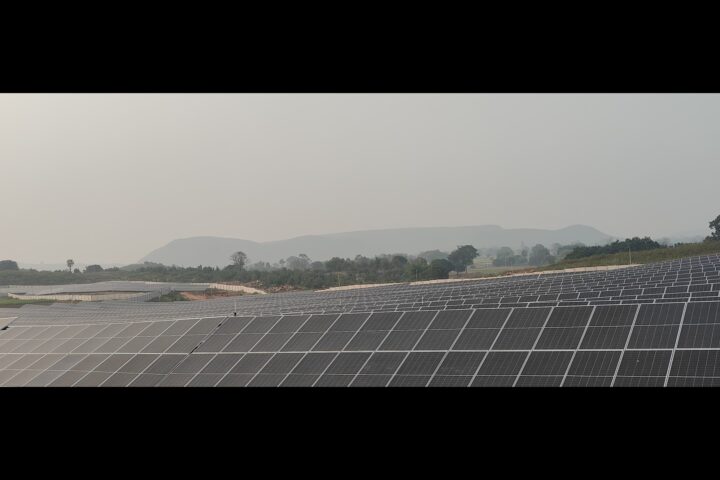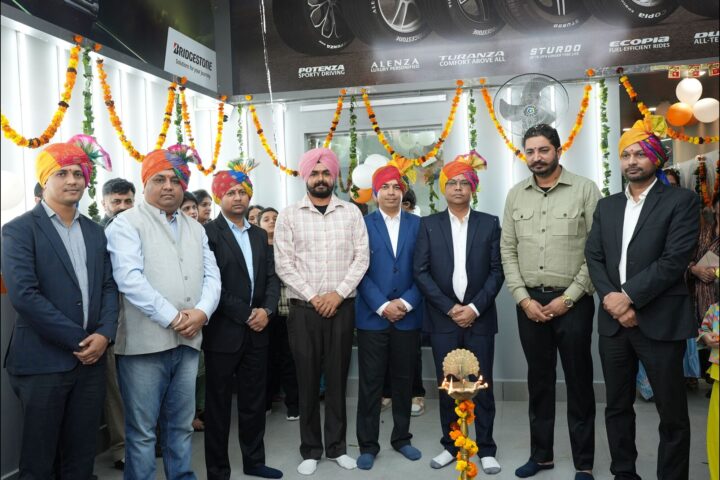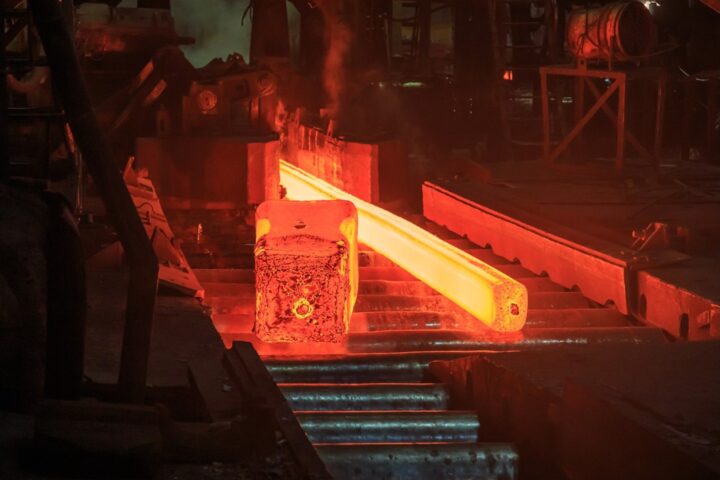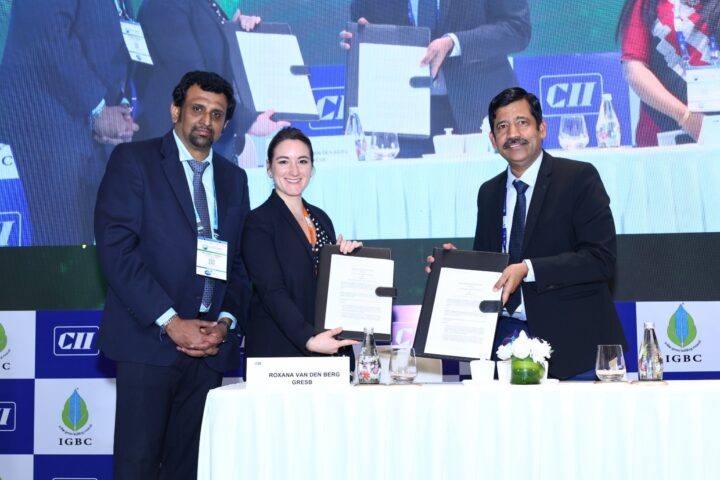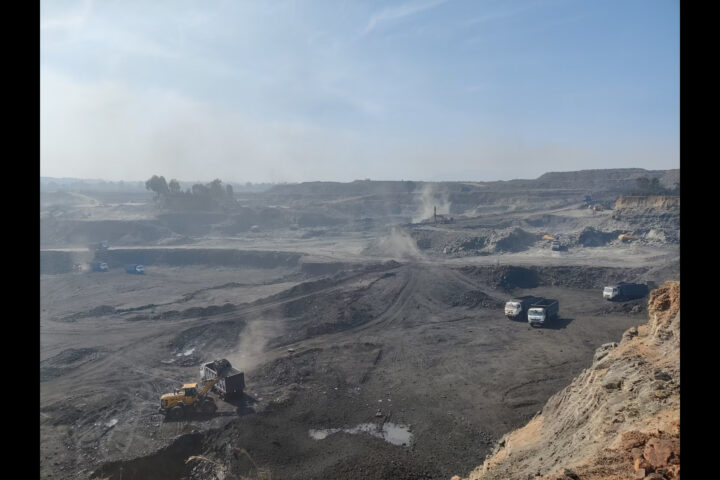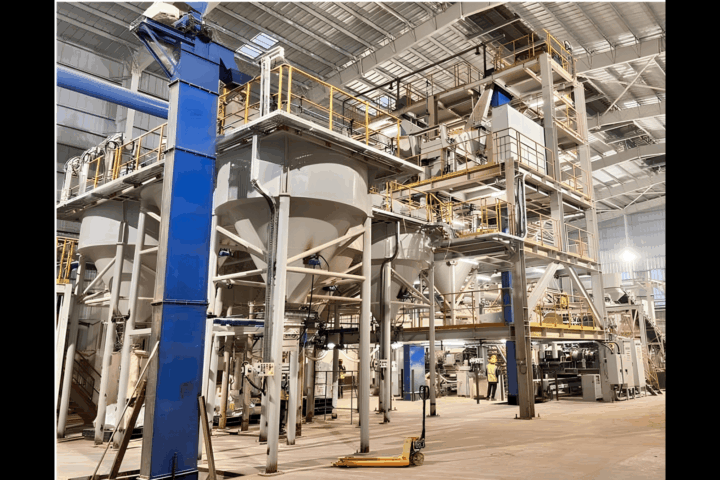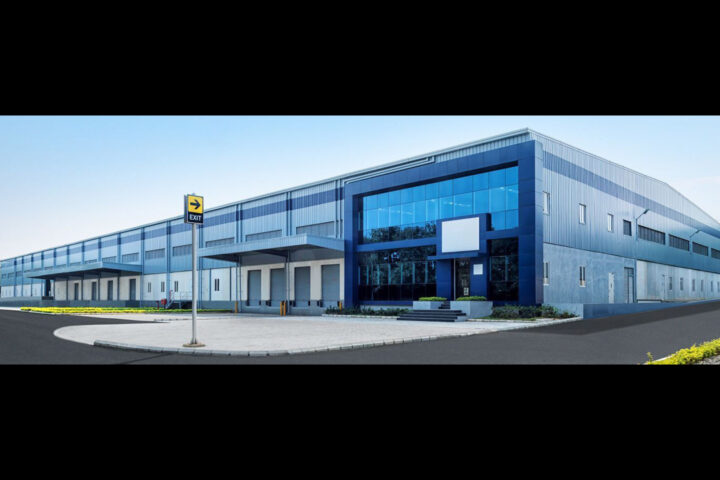As companies pursue aggressive capacity additions through acquisitions and new production facilities, the industry is witnessing a wave of consolidation, shaping a more competitive and efficient landscape. India’s increasing urbanization, government-backed infrastructure projects, and rising per capita consumption continue to drive sustained expansion creating highest headroom for growth
The cement industry, historically perceived as a low-profile sector that attracted attention only during quarterly financial results, has now emerged as a focal point in the business landscape. In recent years, this industry has undergone a remarkable transformation, driven by a series of mergers, acquisitions, and strategic consolidations. This structural shift has been propelled primarily by India’s ambitious infrastructure expansion, which has significantly escalated the demand for cement. Rather than undertaking new greenfield projects – which are capital-intensive and entail long gestation periods – cement manufacturers are increasingly resorting to acquisitions as a faster and more cost-effective growth strategy. Acquiring mid-sized and regionally strong companies not only reduces operational and logistical costs but also provides an immediate market foothold, making it a highly attractive expansion route.
India is currently witnessing an unprecedented infrastructure boom, with substantial investments channeled into roads, metro networks, railways, bridges, ports, airports, and urban housing projects. Cement remains the backbone of these developmental initiatives, with demand soaring to record levels. To capitalize on this rapid surge, leading cement manufacturers are aggressively expanding their production capacities through acquisitions and investments in new manufacturing facilities. The latest Union Budget has further reinforced this growth trajectory by allocating increased expenditure towards infrastructure and housing. Key government-led initiatives such as Smart Cities, affordable housing under the Pradhan Mantri Awas Yojana (PMAY), and industrial corridors are set to bolster the cement industry’s long-term prospects, ensuring its integral role in India's economic growth story.
A wave of consolidation reshaping the industry
The trend of consolidation in the cement sector gained significant momentum in the latter half of 2022, marking the beginning of a new competitive era. The most notable development was the Adani Group’s landmark entry into the industry through the acquisition of Ambuja Cements and ACC from Sweden-based Holcim AG in a $6.4 billion deal. This remains the largest cement acquisition in India’s history, instantly making Adani the second-largest cement manufacturer in the country. The deal not only strengthened Adani’s foothold in the industry but also intensified competition among top-tier players.
Following this, Dalmia Bharat fortified its presence in central India by acquiring assets from Jaiprakash Associates for $687 million in December 2022. Subsequently, in February 2023, Sagar Cements expanded its market reach by acquiring a 95% stake in Andhra Cements.
UltraTech Cement, India’s largest cement producer with an installed capacity of 133 million tonnes per annum (MTPA), swiftly responded to this wave of consolidation by expanding its market dominance through strategic acquisitions. The company made a series of acquisitions, starting with the purchase of South India-based Indian Cement, followed by the acquisition of Kesoram Cement in November 2023. In December 2023, UltraTech Cement further bolstered its market presence by acquiring Burnpur Cement’s grinding assets, solidifying its leadership position. The momentum continued with its acquisition of a 32.72 percent stake in India Cements for Rs 3,954 crore, enhancing its footprint in the highly competitive southern cement market. The latest addition to UltraTech’s acquisition spree came in December 2024 when it acquired an 8.69 percent stake in Star Cement for Rs 851 crore, reinforcing its aggressive expansion strategy.
Meanwhile, Adani Cement also responded to market dynamics by strengthening its position in the sector. In August 2023, the company expanded its cement footprint, followed by a major acquisition in June 2024, when it acquired Penna Cement Industries for Rs 10,422 crore. This was further complemented by Ambuja Cements' agreement in October 2024 to acquire Orient Cement for Rs 8,100 crore, reinforcing Adani’s strategic expansion in the sector.
Recently, JK Cement acquired a 60% stake in Saifco Cement for Rs 1.74 billion, marking a strategic entry into the Jammu and Kashmir cement market. This acquisition positions JK Cement to capitalize on the region's growing construction activities, which have witnessed a significant uptick in recent years.
The race for market dominance intensifies
The Indian cement industry is currently experiencing an unprecedented race for market dominance, with leading players aggressively focusing on capacity expansion, cost optimization, and technological advancements. The ongoing wave of acquisitions underscores the industry's transformation, as companies strive to consolidate their positions and strengthen their competitive edge.
The competition has now reached a crucial juncture, with the battle to acquire HeidelbergCement India intensifying. Multiple major players are engaged in active negotiations, signaling the potential for another significant deal in the sector. According to recent reports, UltraTech Cement is reportedly in advanced discussions to acquire the Indian operations of HeidelbergCement. If this deal materializes, it will further reshape the competitive landscape of the industry, setting the stage for future consolidations.
As India's infrastructure development accelerates, the cement industry remains at the forefront of this transformation. The ongoing wave of consolidation is not merely about market expansion but also about achieving economies of scale, optimizing logistics, and enhancing operational efficiencies. With demand poised for sustained growth, the sector is expected to witness continued mergers and acquisitions, further reinforcing its pivotal role in India’s economic progress.
Rising raw material costs and intense price competition have placed mid-sized and smaller cement manufacturers under significant financial strain, making it increasingly difficult for them to sustain operations. As a result, more regional and mid-sized players are likely to be acquired by major cement companies seeking to strengthen their foothold across diverse markets in India.
Market performance: Q3FY2024-25
Ambuja Cements has registered 163.9 percent rise in consolidated net profit at Rs 2,175.33 crore for the third quarter of the financial year 2024-25 (FY25) from Rs 824.25 crore reported during the same period last year. The Consolidated revenue from operations rose marginally by 4.5 percent to Rs 8,415.31 crore from Rs 8,052.42 crore year-on-year (Y-o-Y). On a standalone basis, the Ambuja Cements registered a net profit of Rs 1,758.03 crore, a 242 per cent rise Y-o-Y from Rs 513.68 crore. ACC reported revenue of Rs. 5,927.3 crore in Q3FY2024-25. The revenue in the third quarter of the FY25 fiscal was 20.6 percent higher than Rs.4,914 crore in the same quarter in the preceding financial year. The company's net profit doubled to Rs.1,091.8 crore as compared to Rs.537.7 crore in the corresponding quarter of the previous fiscal. Its EBITDA increased 23.4 percent on a year-on-year basis to Rs.1,115.7 crore. In the December quarter of FY24, the company’s EBITDA stood at Rs.904.3 crore.
UltraTech Cement reported a 17.30 percent decline, year-on-year (YoY), in its consolidated net profit for Q3FY2024-25. During this quarter the company registered profit of Rs 1,469.50 crore as against Rs 1,776.98 crore in the year-ago period. Revenue from operations, increased 2.70 percent to Rs 17,193.33 crore in Q3FY2024-25 from Rs 16,739.97 crore in the corresponding period last year. Revenue from cement export, readymix concrete (RMC), building products and overseas grew by 37 per cent, 14 per cent, 26 per cent and 35 per cent, respectively, on a yearly basis.
Dalmia Bharat registered a 75.2 percent year-on-year (YoY) decline in net profit at Rs.66 crore for Q3FY2024-25. In the same quarter in FY24, Dalmia Bharat posted a net profit of Rs.266 crore. The company's revenue from operations declined 11.7 percent to Rs.3,181 crore against Rs.3,604 crore in the corresponding period of the preceding fiscal. The company’s EBITDA dropped 34.4 percent to Rs.511 crore in the third quarter over Rs.779 crore in the year-ago period. The EBITDA margin stood at 16.1 percent in Q3FY2024-25 against to 21.6 percent in the corresponding period in the previous fiscal. Shree Cement's net profit decreased to Rs 193 crore in Q3FY2024-25, down 72.4 percent as compared to Rs 702 crore in the same period last year, as per the consolidated financial results. The company’s revenue dropped 11.9 percent to Rs 4,573 crore for the quarter under review from Rs 5,193.5 crore in the corresponding quarter of the last fiscal. EBITDA decreased to Rs 964 crore, down 23.7 percent as compared to Rs 1,264 crore in the year-ago period. The margins narrowed to 21.1 percent from 24.3 percent.
JK Cement reported a 33.2 percent decline in net profit to Rs.189.6 crore in the third quarter, down from Rs.283.8 crore in the same period last year. Revenue stood at Rs. 2,930.3 crore, registering a marginal dip of 0.2 percent from Rs.2,934.8 crore in the corresponding quarter of the previous fiscal. The company's EBITDA declined 21.2 percent year-on-year to Rs.492.2 crore, compared to Rs. 625 crore last year. JK Lakshmi Cement reported a 59.7 percent decline in consolidated net profit to Rs 60.46 crore for Q3FY2024-25. The company had posted a profit of Rs 150.15 crore in the year-ago period. Its revenue from operations was down 12 percent to Rs 1,496.83 crore in the December quarter. It was at Rs 1,702.84 crore in the year-ago period.
The Ramco Cements reported over two-fold jump in consolidated net profit to Rs 181.58 crore in Q3FY2024-25, helped by gains from sale of land. The company had posted a net profit of Rs 81.57 crore during Q3FY2024-2 of the previous fiscal year. Its revenue from operations was down 6.03 percent to Rs 1,983.45 crore during the quarter under review from Rs 2,110.88 crore in the year-ago period. The company’s EBIDTA stood at Rs 291 crore as against Rs 402 crore during Q3FY24, a de-growth of 28 percent.
HeidelbergCement India reported an 83.5 percent decline in net profit to Rs 5.19 crore in Q3FY2024-25 due to lower volume and prices. The company had reported a net profit of Rs 31.47 crore in the October-December quarter a year ago. Its revenue from operations declined 10.6 per cent to Rs 542.82 crore during the December quarter. It was at Rs 607.13 crore a year ago. Nuvoco Vistas Corporation reported consolidated net loss of Rs 61.37 crore in in Q3FY2024-25 as against net profit of Rs 31.03 crore recorded in Q3 FY24. Revenue from operations decline marginally to Rs 2,409.36 crore in third quarter of FY25 from Rs 2,420.98 crore reported in the same period last year.
Cementing a growth trajectory
The Indian cement industry stands at a pivotal moment, driven by the government’s ambitious infrastructure agenda and sustained economic growth. With large-scale investments directed toward roads, metro networks, railways, bridges, ports, and urban housing, the demand for cement is expected to remain robust in the coming years. Additionally, government initiatives such as Smart Cities, affordable housing schemes, and industrial corridors further reinforce the sector’s importance in India’s long-term development strategy.
Public-private partnerships (PPPs) and innovation in construction technology are set to play a crucial role in expanding production capacity and improving supply chain efficiencies. Major cement players are aggressively expanding through mergers and acquisitions, allowing them to capitalize on regional demand and achieve economies of scale. As witnessed in recent years, consolidation has emerged as the preferred strategy for market expansion, with industry giants acquiring mid-sized and regional companies to enhance their footprint. However, the path ahead is not without challenges. Rising raw material costs, fluctuating fuel prices, and supply chain disruptions continue to impact profitability. Intense price competition has further squeezed margins, particularly for mid-sized and smaller cement manufacturers struggling to sustain operations. As a result, the industry is likely to witness further consolidation, with larger firms acquiring financially stressed companies to strengthen their market position. While this will create stronger, more resilient players, it may also lead to reduced competition in certain regional markets.
Moreover, sustainability is becoming an increasingly critical factor for cement manufacturers. As India moves toward its decarbonization goals, the industry will need to invest in green technologies, alternative fuels, and energy-efficient production processes. Companies that prioritize innovation and sustainability will be better positioned to navigate regulatory challenges and attract investors in an evolving market landscape. Despite these headwinds, the overall outlook for the cement industry remains optimistic. The government’s continued push for infrastructure development, coupled with rising urbanization and increased per capita consumption, will keep cement demand on an upward trajectory. Industry leaders that focus on capacity expansion, cost optimization, and technological advancements will emerge stronger, ensuring long-term growth and stability.







